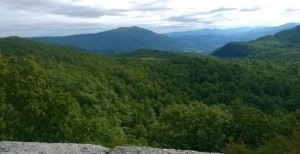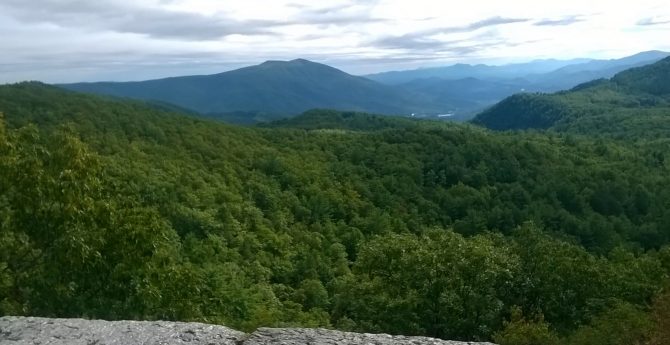>> By Jess Laggis, Blue Ridge Forever Director
By Jess Laggis, Blue Ridge Forever Director
Land conservancies provide a fundamental service to their local communities, and work to ensure that future generations enjoy the same quality of life that we do now. Yet few people understand how conservation benefits them in their daily lives.
If you’ve enjoyed taking in unmarred mountain vistas, you’ve enjoyed the work of land conservancies. If you’ve enjoyed exercising or recreating outdoors in parks, national forests, or greenways, you’ve enjoyed the work of land conservancies. If you enjoy drinking clean, fresh water, and having access to local, fresh foods, you enjoy the benefits of land conservation. If you hope that the children in your life will also be able to enjoy these things throughout their lives, you already support conservation.
Land conservancies, also known as land trusts, protect the places you love, and the natural resources those places harbor. Those resources provide the foundations for healthy, functioning ecosystems – both wild and human. Protected lands either remain under private ownership, with land trust supervision, are transferred to state or national park or forest ownership for the public to enjoy, or are maintained as preserves.
For those who enjoy spending time outdoors, the link to conservation is direct and clear. Consolidating and expanding parks and public forests provides expanded and improved opportunities to recreate. But the benefits of conservation flow into the heart of major metropolises as well.
Conservation prevents development on sensitive sites where the damage from development out ways the gain. For example, steep-slope tree removal causes erosion, carrying runoff into waterways that feed municipal drinking water sources. Tree removal near streams can increase water temperature, leading to an unhealthy bloom of microorganisms and an imbalance in stream ecology. That’s bad news for stream inhabitants as well as hikers, anglers, and everyone who drinks downstream.
Streams that begin in the mountains of Western North Carolina flow downstream to provide the drinking water for millions of people across the South East. Though protecting stream sources cannot guarantee water will remain clean throughout its course, contaminating the source guarantees that water will be contaminated throughout its course.
As our population grows and development pressures increase, it is critical to maintain the unbuilt environment as we plan the built environment to ensure we all have access to the basic resources we need to thrive. Clean water is only one of a number of conservation benefits, and there are many ways to get involved with conservation in your area. To learn more, contact your local land trust, or visit blueridgeforever.info.

[…] Land Conservancies: Preserving the Priceless […]